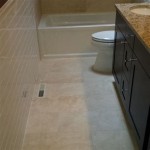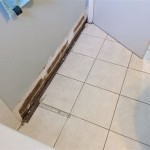How to Install a Bathroom Vent on a Metal Roof
Installing a bathroom vent on a metal roof requires careful planning and execution to ensure proper ventilation and prevent leaks. This process involves working with metal roofing materials, which present unique challenges compared to traditional asphalt shingles. While the steps may seem complex, following a clear guide and using the right tools can make the installation process manageable for DIY enthusiasts.
1. Planning and Preparation
Before starting the installation, it's crucial to plan carefully and gather the necessary tools and materials. Begin by determining the vent location, considering factors like proximity to the bathroom, accessibility for maintenance, and avoiding any obstacles on the roof. Measure the vent size and ensure it's compatible with your existing roof structure and ventilation requirements.
Next, gather the following materials:
- Bathroom vent fan with a roof-mounted exhaust outlet
- Metal roof flashing kit compatible with the vent size and roof material
- Roofing sealant (compatible with both metal and the flashing material)
- Screws or fasteners (appropriate for metal roofing)
- Safety equipment: ladder, safety harness, fall arrest system, gloves, and goggles
- Power drill with appropriate drill bits
- Measuring tape, level, marker, and utility knife
Once the materials are ready, ensure you understand the structural integrity of your roof. Check for any weak spots or areas that might require reinforcement before proceeding. This step is essential for preventing damage to the roof and ensuring the long-term stability of the ventilation system.
2. Installing the Vent and Flashing
With the planning complete, it's time to install the vent and flashing. This process involves working with metal roofing materials, which require careful techniques to prevent leaks and ensure a secure installation.
First, identify the location where the vent will be installed. Ensure the chosen spot is free from any obstacles like roof trusses, chimneys, or vents. Mark the location with a marker or chalk line. Then, use a tin snips or a utility knife to cut a hole in the roof for the vent using the vent's template as a guide.
Next, install the flashing kit. This typically involves separate pieces that fit around the vent opening, ensuring a watertight seal. Most flashing kits include a base plate, side flashing, and a vent collar. Secure the base plate to the roof with screws or fasteners compatible with metal roofing. Use a level to ensure the base plate is properly aligned.
After attaching the base plate, install the side flashing pieces. Secure them to the roof and the base plate with screws or fasteners. Use roofing sealant to create a watertight seal around the sides and bottom of the flashing. Finally, attach the vent collar to the flashing and the vent fan.
Ensure the vent collar is properly sealed to the flashing and the vent fan to prevent leaks. Use roofing sealant liberally around the joints. If your vent fan has a separate vent cover, install it following the manufacturer's instructions. Before moving on, take a step back and examine your work. Ensure all screws are tight, and the flashing is securely attached to the roof.
3. Finishing Touches and Safety Tips
Once the vent and flashing are installed, perform a final inspection to ensure a secure and leak-proof installation. Check all screws and fasteners, ensuring they are securely tightened. Run a bead of roofing sealant around the perimeter of the vent and flashing to provide extra protection against leaks.
Finally, use a level to ensure the vent is properly aligned and the vent cover is securely attached. Check for any loose screws or gaps in the flashing. You can use caulking or sealant to fill small gaps and ensure a watertight seal.
Remember to always prioritize safety when working on a roof. Use a ladder with secure footing, wear a safety harness and fall arrest system, and follow proper ladder safety practices. Be aware of your surroundings and never work on a roof alone.
When working with metal roofing, be careful not to damage the roof surface. Use the correct tools for cutting and drilling, and avoid using tools that could puncture or scratch the metal. Take caution working with sharp tools and wear appropriate safety gear.

How To Install Vents In Metal Roofs

Bath Vent Install In Metal Roof Slow House Update 27

Installing A Bathroom Fan Fine Homebuilding

How To Install A Bathroom Roof Vent Family Handyman

Bath Vent Install In Metal Roof Slow House Update 27

How To Vent A Bath Fan Through The Roof

Covent Exhaust Fan Vent Levi S Building Components

How To Install A Bathroom Roof Vent

Install Turbine Vent On Metal Roof Whirlybird Slow House Update 23

How To Replace And Install A Bathroom Exhaust Fan From Start Finish For Beginners Easy Diy
Related Posts







